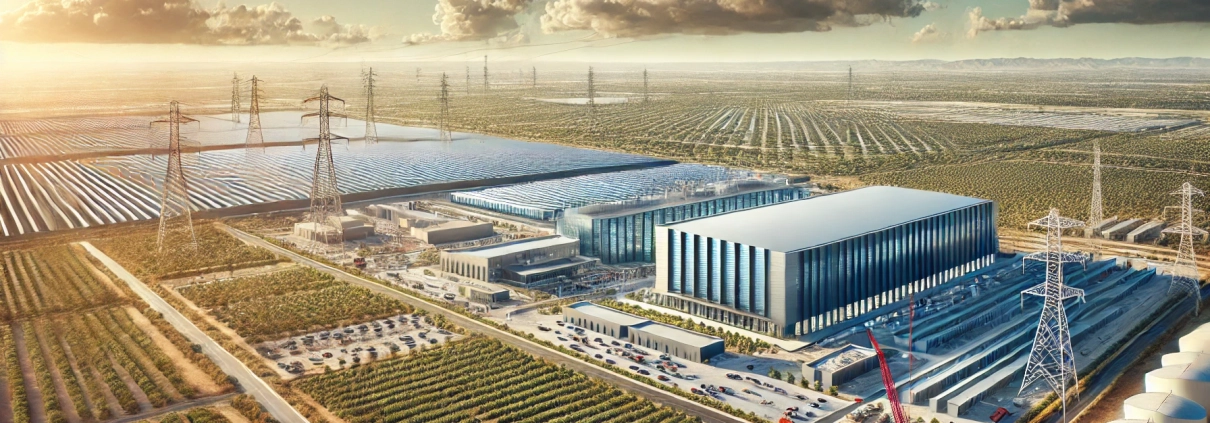Opportunistic
A real estate investment strategy categorized by high risk and high returns. Opportunistic real estate strategies typically involve a high degree of uncertainty, more volatility in cash flow and require greater subject matter expertise. These strategies will often employ more leverage and subject the investors to a greater probability of losing their capital. Opportunistic real estate investments are most often either ground-up developments or the redevelopment of properties to a higher and better use.
The Four CRE Risk Profiles
Putting ‘Opportunistic’ in Context
Scenario Overview
SolTex Development Partners, a real estate developer, has identified a prime opportunity to develop a state-of-the-art data center in South Texas, named Horizon Data Hub. The project is situated in the rapidly growing Rio Grande Valley region, which is attracting interest due to its proximity to major fiber optic networks and affordable land.
Details of the Project
- Project Type: Ground-up development
- Property Type: Data Center
- Location: South Texas (Rio Grande Valley)
- Total Development Cost: $120 million
- Projected Stabilized NOI: $15 million annually
- Development Timeline: 24 months
- Targeted IRR: 20%
How Opportunistic Fits This Context
The Horizon Data Hub project embodies the opportunistic strategy due to its high risk and reward profile. SolTex Development Partners is navigating several key challenges, including:
- Securing zoning approvals to repurpose the site from agricultural use to a high-tech data facility.
- Managing complex construction requirements, such as redundant power systems, advanced cooling infrastructure, and security features.
- Identifying anchor tenants for pre-leasing to mitigate lease-up risk post-construction.
Despite these risks, the project offers significant upside. With demand for data centers surging across Texas, SolTex Development Partners projects that the Horizon Data Hub will achieve a stabilized NOI of $15 million annually. Leveraging strategic partnerships and institutional funding, the developer expects to generate a 20% internal rate of return (IRR) over a five-year horizon.
Key Financial Analysis
To illustrate the potential returns, consider this simplified calculation of the targeted IRR. If the total development cost is $120 million and the project is sold upon stabilization for $180 million (a 6.7% cap rate on $15 million NOI), the net profit would be $60 million. Over a 5-year holding period, this aligns with an approximate 20% IRR:
- Total Investment: $120 million
- Stabilized NOI: $15 million
- Exit Value: $180 million (based on a 6.7% cap rate)
- Net Profit: $60 million
Conclusion
The Horizon Data Hub is a prime example of an opportunistic investment strategy. While the project carries substantial risk—including zoning hurdles and construction complexity—the potential rewards, such as high NOI and robust IRR, make it an attractive opportunity for SolTex Development Partners.
Frequently Asked Questions about Opportunistic Real Estate Investments
What does “Opportunistic” mean in real estate investing?
“Opportunistic” refers to a high-risk, high-reward real estate investment strategy involving significant uncertainty and potential capital loss. These investments often require substantial expertise and include ground-up developments or property redevelopments.
How does opportunistic investing compare to other real estate strategies?
Opportunistic investing is the riskiest of the four major CRE strategies:
Core: Low risk, stable returns
Core Plus: Slightly more risk, moderate upside
Value Add: Moderate risk, potential for increased value through improvements
Opportunistic: Highest risk, potentially highest return through development or repositioning
What are typical characteristics of an opportunistic investment?
Typical traits include:
Ground-up development or major redevelopment
Heavy use of leverage
Uncertainty in entitlements or lease-up
Complex construction or use conversion
Volatile or no cash flow during early phases
What example illustrates an opportunistic strategy?
The Horizon Data Hub, developed by SolTex Development Partners, is an example. It’s a $120 million ground-up data center in South Texas, facing zoning and construction challenges but targeting a 20% IRR based on a projected $15 million NOI and $180 million exit value.
Why are opportunistic strategies considered riskier?
They involve uncertain variables like entitlement hurdles, lease-up risk, construction delays, and market shifts. Additionally, they rely heavily on leverage and often lack in-place cash flow at acquisition, increasing downside exposure.
What kind of return is expected from an opportunistic investment?
Opportunistic strategies typically target IRRs of 18%–25% or higher, depending on project scale, market conditions, and risk profile. In the Horizon Data Hub example, the targeted IRR is 20% over a 5-year horizon.
Click here to get this CRE Glossary in an eBook (PDF) format.

